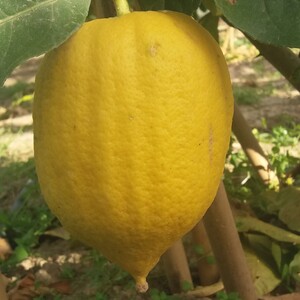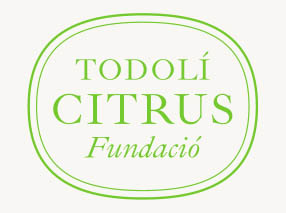Citrons
Etrog
Citrus medica L.
TCF-201
VARIETAL GROUP
ORIGIN
AVAILABILITY
Citrons
Asia
November – Juny

ORIGIN DATA:
The Etrog Citron has a very particular role in history, since it was chosen by the Jewish people as one of the sacred elements for the celebration of their “Feast of Tabernacles” (Sukkot). This implies that it was known and imported from warmer regions of the east already in Roman times. In fact, etrog means citron in Hebrew. In addition to its religious role, this fruit has been used for medicinal purposes in China for thousands of years.
TREE AND FRUIT DESCRIPTION:
Etrog is a citron with non-acidic pulp and green leaf buds and white flower buds, unlike most citrons that have acidic pulp and purple leaf and flower buds. The fruit is oblong, medium-large, with a flat basal area and pyramidal apical mamelon without groove. It usually has a persistent style. The rind is slightly bulging and slightly grooved. Edible, thick and high quality albedo. Sweet pulp, not very juicy, grainy and with seeds, around a central axis generally hollow.
USES:
In addition to its religious and medicinal uses, the Etrog citron can be consumed fresh due to the quality of its rind and albedo. The grated rind is used as a condiment for soups, fish or sweets, as well as for flavoring soft drinks or alcoholic beverages. The albedo is consumed fresh or processed. Fresh as an accompaniment to meat and fish, or in green or fruit salads. Processed for the elaboration of purees or sauces.




